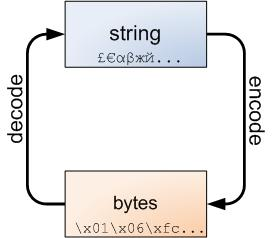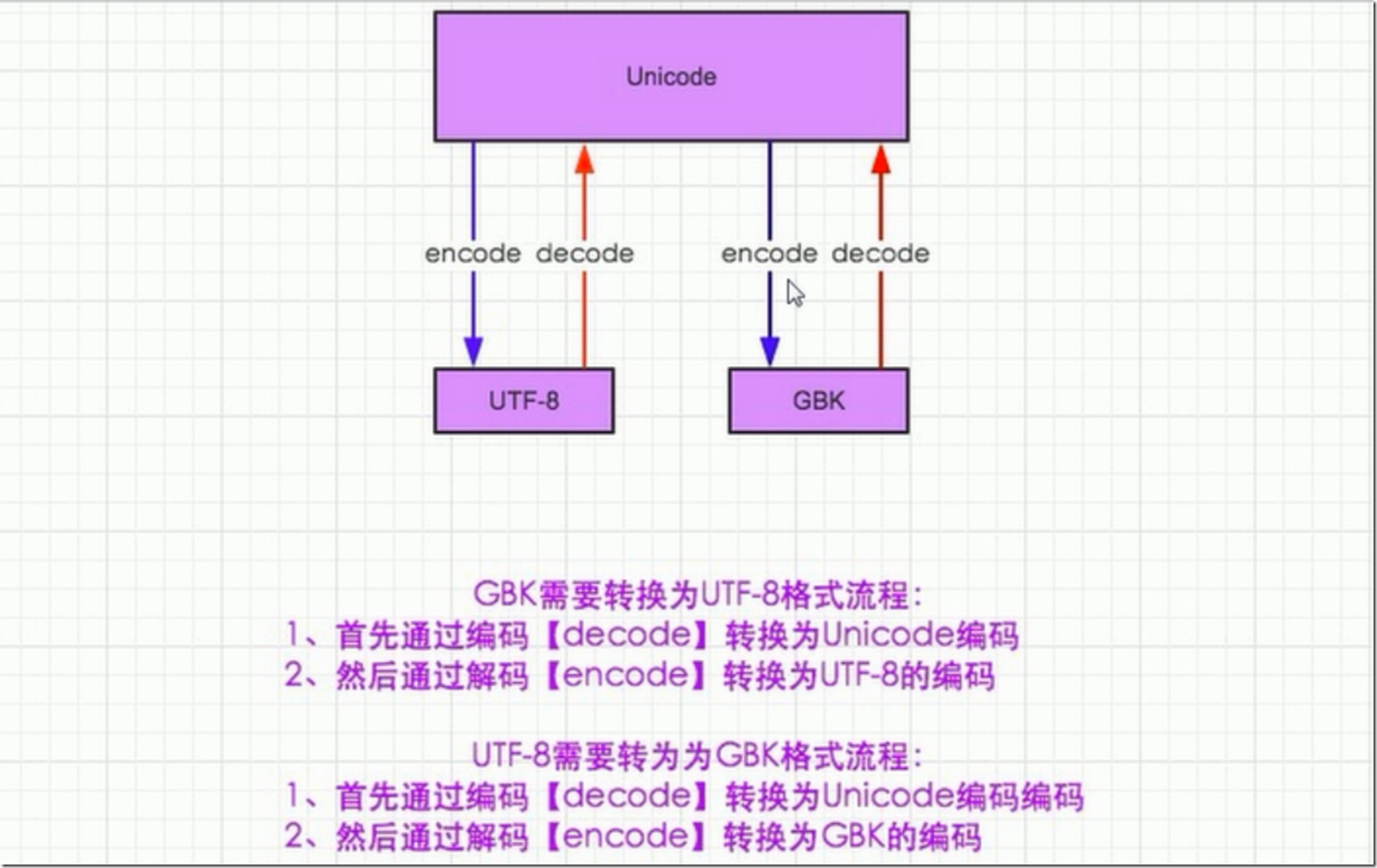1、python程序中的字符编码
python解释器在加载.py文件中的代码时,会对内容进行编码(默认ascill)。
执行以下代码:
[root@localhost ~]# cat test01.py
#/usr/bin/python2
print("你好,世界!")
在python2.7上:
[root@localhost ~]# workon test01
(test01) [root@localhost ~]# python
Python 2.7.5 (default, Oct 30 2018, 23:45:53)
[GCC 4.8.5 20150623 (Red Hat 4.8.5-36)] on linux2
Type "help", "copyright", "credits" or "license" for more information.
>>> exit()
(test01) [root@localhost ~]# python test01.py
File "test01.py", line 2
SyntaxError: Non-ASCII character 'xe4' in file test01.py on line 2, but no encoding declared; see http://www.python.org/peps/pep-0263.html for details
在python3.7上:
[root@localhost ~]# workon test02
(test02) [root@localhost ~]# python
Python 3.7.7 (default, Mar 27 2020, 12:29:36)
[GCC 4.8.5 20150623 (Red Hat 4.8.5-39)] on linux
Type "help", "copyright", "credits" or "license" for more information.
>>> exit()
(test02) [root@localhost ~]# python test01.py
你好,世界!
再次执行如下代码:
[root@localhost ~]# cat test02.py
#/usr/bin/python2.7
#-*- coding:utf-8 -*-
print("你好,世界!")
在python2.7上:
(test01) [root@localhost ~]# python
Python 2.7.5 (default, Oct 30 2018, 23:45:53)
[GCC 4.8.5 20150623 (Red Hat 4.8.5-36)] on linux2
Type "help", "copyright", "credits" or "license" for more information.
>>> exit()
(test01) [root@localhost ~]# python test02.py
你好,世界!
在python3.7上:
(test02) [root@localhost ~]# python
Python 3.7.7 (default, Mar 27 2020, 12:29:36)
[GCC 4.8.5 20150623 (Red Hat 4.8.5-39)] on linux
Type "help", "copyright", "credits" or "license" for more information.
>>> exit()
(test02) [root@localhost ~]# python test02.py
你好,世界!
python2.x中默认的编码格式是 ASCII 格式,在没修改编码格式时无法正确打印汉字,所以在读取中文时会报错。
解决方法为只要在文件开头加入 # -*- coding: UTF-8 -*- 或者 #coding=utf-8 就行了。
python3.x中:

就是说,在python3.7上Cpython强制使用utf-8编码。
注意:
python3.X 源码文件默认使用utf-8编码,所以可以正常解析中文,无需指定 UTF-8 编码。
小结:
python3 : 默认底层编码是Unicode,encode之后将是bytes;
python2 : 底层编码是bytes;
2、字符编码介绍
ASCII (美国信息交换标准代码)是基于拉丁字母的一套电脑编码系统,主要用于显示现代英语和其他西欧语言。到目前为止共定义了128个字符。ASCII 码使用指定的7 位或8 位二进制数组合来表示128 或256 种可能的字符。

有128-255个字符的扩展。
为了处理汉字,程序员设计了用于简体中文的GB2312和用于繁体的big5。
GB2312-80 是 1980 年制定的中国汉字编码国家标准。共收录 7445 个字符,其中汉字 6763 个。GB2312 兼容标准 ASCII码,采用扩展 ASCII 码的编码空间进行编码,一个汉字占用两个字节,每个字节的最高位为1。
1995年汉字的扩展规模达到21886个符号,分别是汉字区和图形符号区,产生了GBK1.0。
2000年的GB18030取代了GBK1.0的正式国家标准。该标准收录了27484个汉字,同时还收录了藏文,蒙文,维吾尔文等重要的少数民族文字。
从ASCII、GB2312、GBK到GB18030,这些编码是向下兼容的。
显然ASCII码是无法将世界上的各种文字和符号全部表示,所以,就需要新出一种可以代表所有字符和符号的编码,即Unicode。
Unicode(统一码,万国码,单一码)是一种在计算机上使用的字符编码,Unicode是为了解决传统的字符编码方案的局限性而产生的,他为每种语言中的每个字符设定了统一并且唯一的二进制编码,规定所有的字符和符号最少由16位来表示(2个字节)。
UTF-8,是对Unicode编码的压缩和优化,他不在是最少使用2个字节了,而是将所有的字符和符号进行分类:ASCII码中的内容用1个字节保存,欧洲的字符用2个字节保存,东亚的字符用3个字节保存。
3、字符编码与解码
python 3中最重要的新特性可能就是将文本(text)和二进制数据做了更清晰的区分。文本总是用unicode进行编码,以str类型表示;而二进制数据以bytes类型表示。
在python3中,不能以任何隐式方式将str和bytes类型二者混合使用。不可以将str和bytes类型进行拼接,不能在str中搜索bytes数据(反之亦然),也不能将str作为参数传入需要bytes类型参数的函数(反之亦然)。
字符串和字节符之间划分界线是必然的。如下为字符串和字节符之间的转换:

strings可以被编码(encode)成字bytes,bytes也可以解码(decode)成strings:
#-*- coding:utf-8 -*-
msg = "我们都是好孩子" #此时变量msg为utf-8格式
print(msg)
print(msg.encode(encoding="utf-8")) #将变量msg转换为bytes
print(msg.encode(encoding="utf-8").decode(encoding="utf-8")) #再将变量msg转换为string
输出结果为:
我们都是好孩子
b'xe6x88x91xe4xbbxacxe9x83xbdxe6x98xafxe5xa5xbdxe5xadxa9xe5xadx90'
我们都是好孩子

在python2.7中的转换:
# -*- coding:utf-8 -*-
a = "你好" #此时编码为utf-8
a_to_unic = a.decode("utf-8") #将utf-8,decode为unic,调用时必须声明自己为utf-8,否则被认为是系统默认编码格式bytes
a_to_gbk = a_to_unic.encode("gbk") #将unic,encode为gbk,调用时必须声明转换为什么格式
a_to_utf8 = a_to_gbk.decode("gbk").encode("utf-8") #将gbk直接转换为utf-8
print(a_to_unic)
print(a_to_gbk)
print(a_to_utf8)
在python3.7中的转换:
#-*- coding:gbk -*-
msg = "我们都是好孩子"
print(msg)
m_to_unic = msg.encode("gbk")
m_to_uft8 = msg.encode("utf8")
m_to_gb2312 = msg.encode("gb2312")
print(m_to_unic)
print(m_to_uft8)
print(m_to_gb2312)
m_to_unic = msg.encode("gbk").decode("gbk")
m_to_uft8 = msg.encode("utf8").decode("utf8")
m_to_gb2312 = msg.encode("gb2312").decode("gb2312")
输出结果为:
我们都是好孩子
b'xcexd2xc3xc7xb6xbcxcaxc7xbaxc3xbaxa2xd7xd3'
b'xe6x88x91xe4xbbxacxe9x83xbdxe6x98xafxe5xa5xbdxe5xadxa9xe5xadx90'
b'xcexd2xc3xc7xb6xbcxcaxc7xbaxc3xbaxa2xd7xd3'
我们都是好孩子
我们都是好孩子
我们都是好孩子